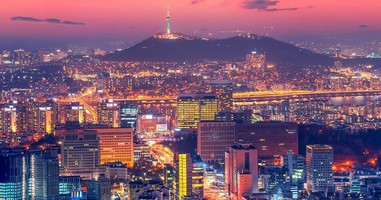
Blogs
Silicon Valley through the eyes of a political economist
May 1, 2020


Aigerim Kushumbayeva
Analyst
Dud's video report about Silicon Valley led to a lot of discussion, and we also did our part. In addition to motivating programmers and entrepreneurs, the video also touches on some economic concepts and refutes some stereotypes that are common among CIS residents. The purpose of this post is to look at the topics covered in the video from an alternative angle of an economist and policymaker in the CIS.
1. Why is brain drain not so bad for economies?
Basic knowledge of Economics allows to notice the stereotypical statements that talents "flow away" and it is necessary to keep them. In fact, the brain drain is nothing more than an element of national wealth, i.e. a part of the country's GNI (gross national income).
It is important to note that the traditionally used indicator of "wealth" - GDP - on the contrary, does not take into account the income of its citizens abroad, but includes the "flowing" income of foreign citizens from the territory of the country (expatriates, foreign investment, etc.).
In addition to IT specialists of the Valley, GNI includes branches of domestic companies (a branch of Almaty Car-repair Plant in Tatarstan) and salaries of our citizens abroad (Dimash is a striking example in the field of art). The only important thing is to create conditions for talented citizens who earn money abroad to the benefit of retaining their citizenship.
2. Why have technology parks in the CIS not produced (and will not produce) any well-known startups?
As long as the state finances the technology parks (for example, Skolkovo), no innovation will be produced there. The economic problem of "Agent-principal" clearly explains this phenomenon: in this case, there is simply no principal (the one who pays the money and gets the final benefit).
The state, being an impersonal "wallet", does not generate entrepreneurship. The heads of technology parks and the Ministry of Innovative Development are only agents, just like the "entrepreneurs" themselves, who depend on the resources of the state (and in the case of Kazakhstan, on oil revenues) and have no personal motivation for the final success of the product. As long as there are no private investors and no own investments (savings), innovation is out of the question.
3. Why there will not be a second Silicon Valley in the world yet?
The gravitational model clearly explains the "failure" of many cues of the Valley: it is the Silicon Valley that will continue to attract talent with its multiples of high revenues and relatively low transaction costs (presence of English law, concentration of private investors and rapid access to networks, protection of intellectual rights).
According to the Gravitational model, the only way to "grab" the Valley's revenue is by servicing It, not by creating competing sites. Using the example of hiring Russian and Belarussian programmers at a distance, it is necessary to create links with the Valley for further integration with it.
Ultimately, the Valley makes it clear that there is no point in competing for the title of the best IT Park in the world, because with its innovations and revenue growth, It is already leading to an indirect growth of revenue and ideas in the world. This is a win-win game. And for developing countries like Kazakhstan, the first step is to create a supply for the growing demand of "Valleys" as illustrated by Russia and Belarus.
all publications











